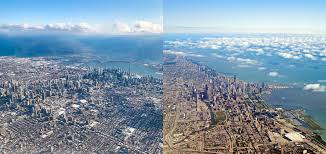Toronto vs Chicago: A Tale of Two Dynamic Cities

Introduction
Toronto and Chicago are two of North America’s most iconic cities, each boasting a rich cultural heritage, diverse populations, and dynamic economies. Their differences in architecture, cultural influence, and city life have led to ongoing debates about which city reigns supreme. Understanding these differences is essential for residents, visitors, and anyone interested in urban living.
City Overview
Toronto, the largest city in Canada, is known for its multicultural atmosphere, innovative industries, and a strong emphasis on inclusivity. The city is home to around 3 million people and is celebrated for its skyline, highlighted by the CN Tower. On the other hand, Chicago, with a population of nearly 2.7 million, is renowned for its architectural landmarks, vibrant arts scene, and historical significance in American history.
Culture and Attractions
When it comes to culture, both cities have their unique offerings. Toronto hosts a multitude of film festivals, including the Toronto International Film Festival (TIFF), which draws filmmakers and fans from around the globe. Chicago is similarly rich in cultural attractions, boasting the Art Institute of Chicago and a robust theater scene, including the famed Chicago Broadway shows.
Economy and Opportunities
Economically, both cities serve as vital hubs for their respective countries. Toronto is recognized as a leading financial center, home to the TSX (Toronto Stock Exchange), with significant contributions from technology and healthcare sectors. Chicago, often called the “Windy City,” is equally important, with major industries including finance, technology, and manufacturing. Both cities also face challenges such as housing affordability and economic inequality, which require ongoing attention from their leaders.
Transportation and Accessibility
Transportation is another key aspect where these cities differ. Toronto’s public transit system, operated by the Toronto Transit Commission (TTC), includes subways, streetcars, and buses, making it relatively accessible. Chicago also offers an extensive public transportation network via the Chicago Transit Authority (CTA), known for its ‘L’ trains, which span the city and its suburbs. However, traffic congestion is a common complaint in both cities.
Conclusion
In conclusion, Toronto and Chicago each present unique advantages and challenges that reflect their identities as major urban centers. While Toronto offers a multicultural environment and progressive policies, Chicago boasts historical significance and vibrant arts. As urban life continues to evolve, the ongoing comparisons between these cities will provide valuable insights into the future of urban development. For locals and visitors alike, the choice between Toronto and Chicago ultimately depends on personal preferences for lifestyle, culture, and economic opportunities.









